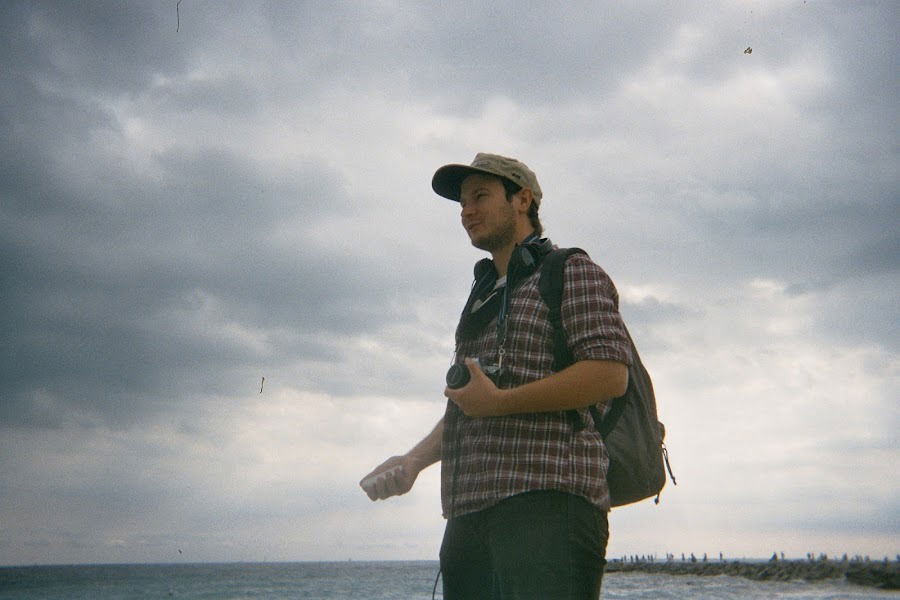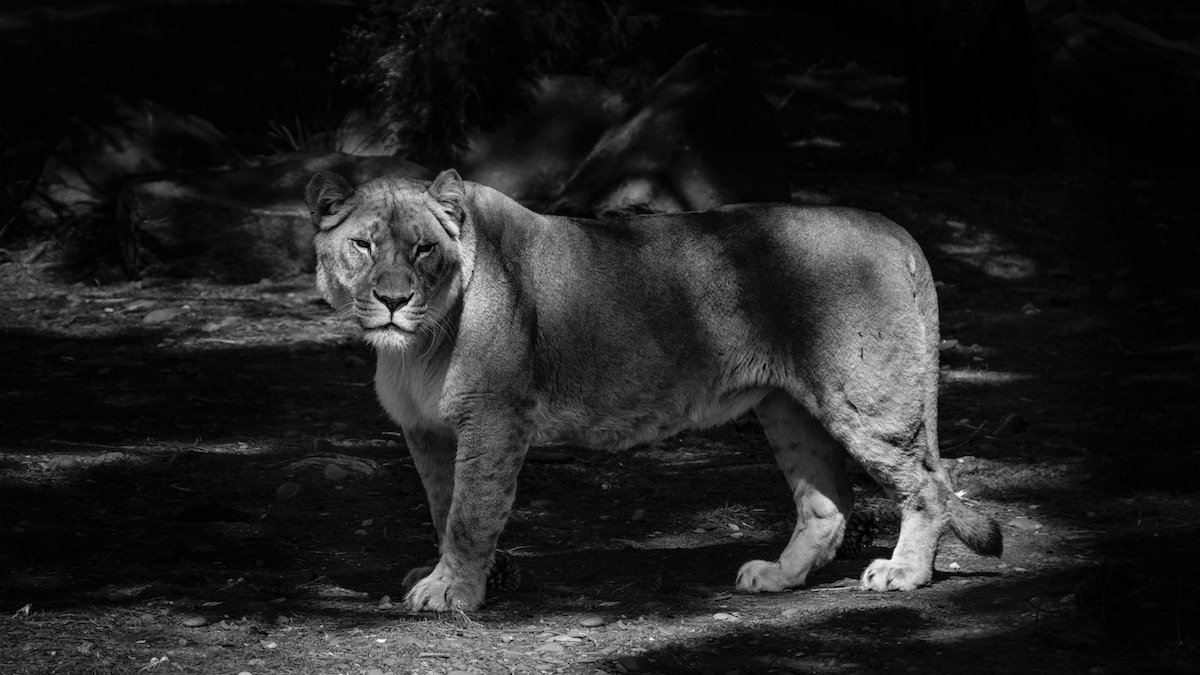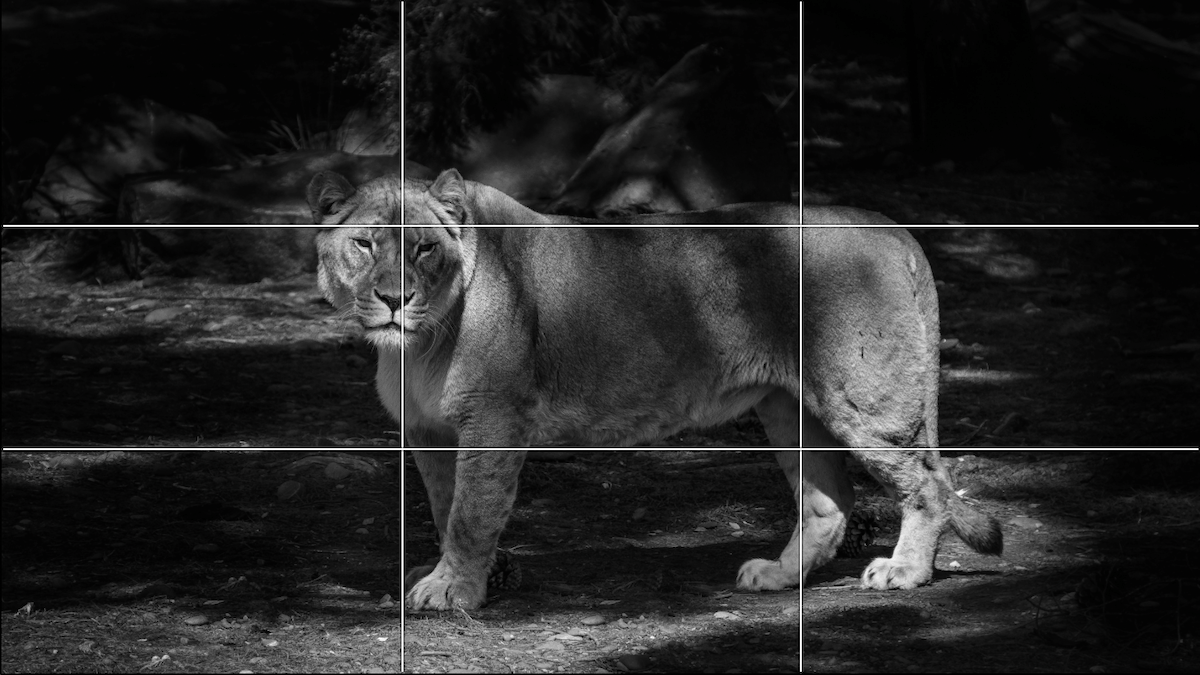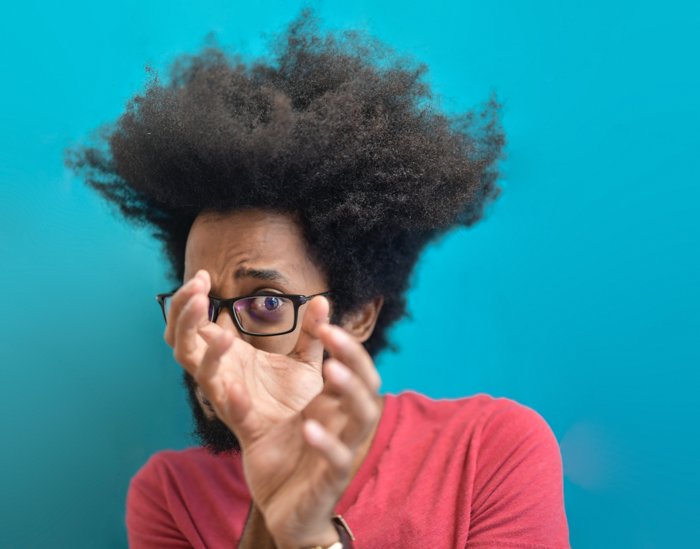Aesthetic photography is about creating images that stand out from the crowd. They catch the eye and hold the attention. They’re bold, bright, and pleasing to look at. But what exactly are aesthetic pictures? And what makes them so captivating?
We’ll take a deep dive into aesthetic photography. We’ll look at how and why a photographer builds their aesthetic in photography. And we’ll give you some fabulous tips for creating amazing examples!
What Are Aesthetic Pictures and Aesthetic Photography?
The word aesthetic refers to the appreciation of beauty. Therefore, aesthetic images are beautiful in their own right. They stand alone as examples of pleasing imagery. And they have a captivating quality that gives the viewer a sense of satisfaction.
Photographers use many techniques to create aesthetically pleasing pictures. They use strong composition with symmetry and balance. They incorporate leading lines to draw the viewer’s eye. And they use color theory to give their images a feeling of harmony.
So aesthetic photography is the art of creating beautiful and pleasing pictures. The photographer uses artistic techniques and design principles to create these aesthetic pictures.
Aesthetics play a strong role in portrait and landscape photography. Plus, aesthetic image-making is a key aspect of fine art photography. Fantasy photographers also create aesthetic pictures to tell stories and build worlds.
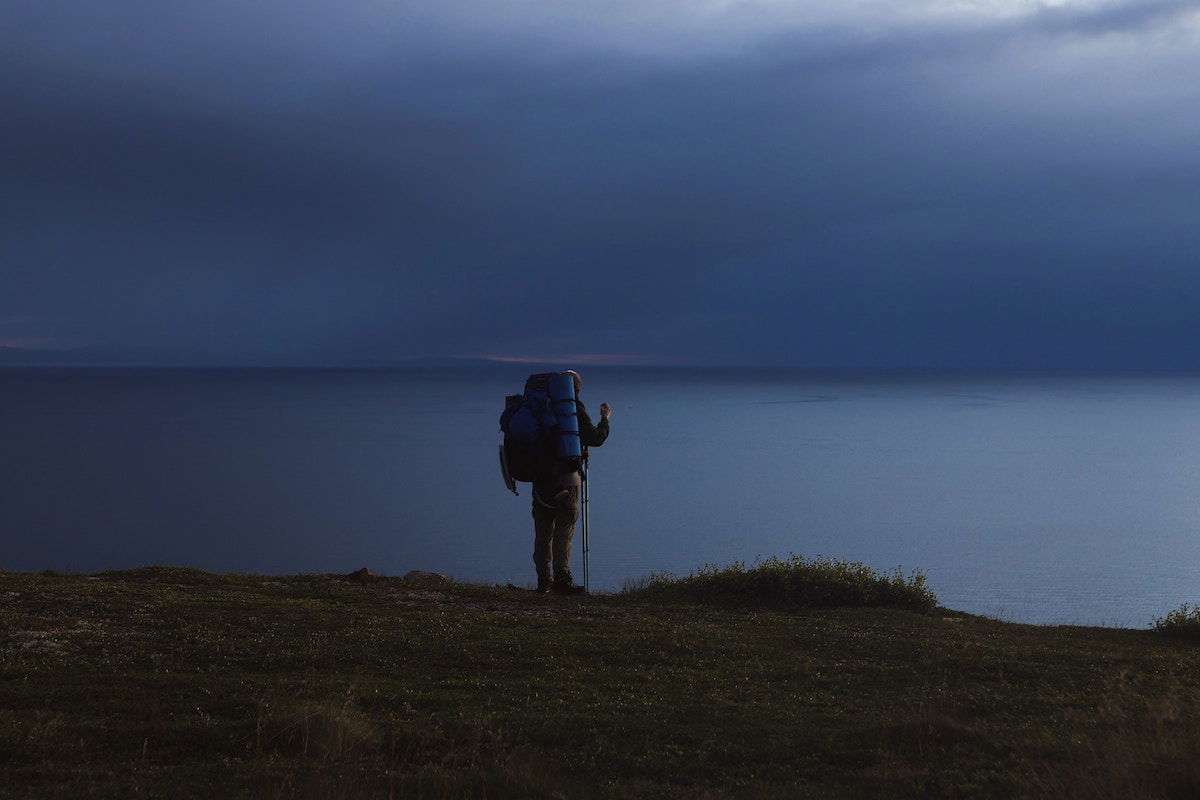
Aesthetic vs Style
When we talk about aesthetics in photography, we can also refer to an artist’s aesthetic style. But we must carefully separate a photographer’s style from their aesthetic. They’re two different things.
A photographer’s style is the way they work. It relates to their equipment and their working processes. Their aesthetic is how their photos look. Their photos might have trademark features and quirks that make them identifiable to that artist.
There is some overlap between style and aesthetic. And an artist’s style will contribute to their aesthetic. The techniques and equipment craft their aesthetic pictures.
Style is how the photographer achieves their results. Their aesthetic combines visual signatures that link the photo to the photographer. If a photographer has a strong aesthetic, you’ll be able to know it’s theirs just by looking at it.
For example, looking at Jovana Rikalo’s work on Instagram, we see how her photography style creates her aesthetic. She uses elaborate costumes and props. And she often focuses on one bold color to enhance the theme. It creates a strong fantasy aesthetic that’s all her own.
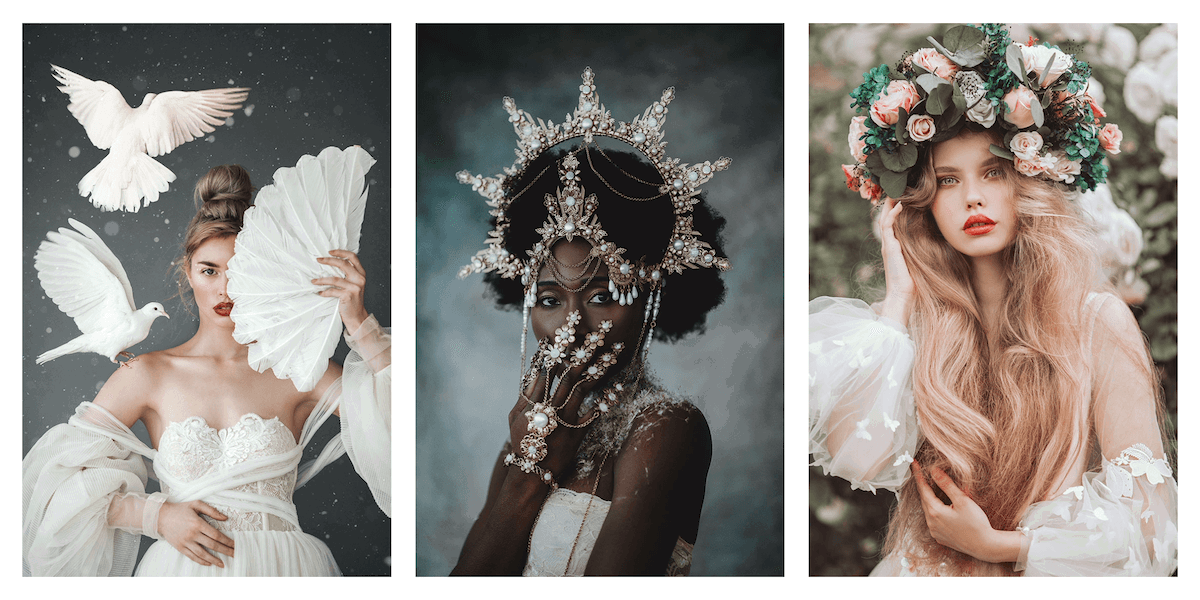
Why You Need a Photography Aesthetic
Having a strong photography aesthetic helps your work become recognizable. When people see your photographs, they can identify them as yours. It helps you build a reputation. And it will generate admirers and clients.
When you’re a professional photographer, your photos are your product. And like any product, brand recognition helps strengthen your position in the marketplace. Buyers and clients will recognize your photography. Your “look” makes images memorable, and your renown grows.
Photographers with a strong aesthetic know their niche and lean into it. Their work can span different types of photography. But no matter what genre they’re working in, their aesthetic makes their photos stand out.
Having a unique aesthetic style in your work demonstrates artistic flair and ability. And it shows potential clients you’re consistent and reliable. They know you can add your personal touch no matter the brief.
Attracting the right clients is another reason why your aesthetic matters. When you’re hired as a photographer, you want to know your client will appreciate your work. They won’t be disappointed if they can see the type of photography you produce beforehand.
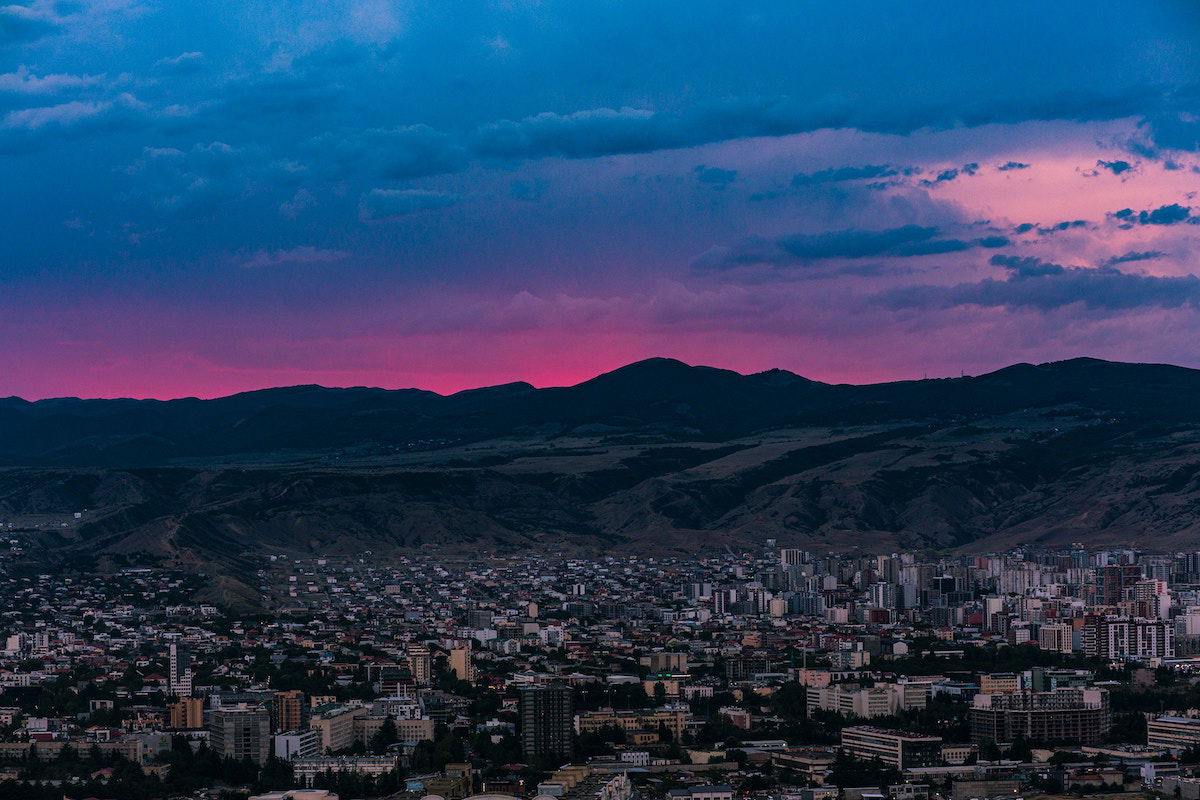
12 Aesthetic Photography Tips
We’ve split our tips for aesthetic photography into two sections.
- Tips for Creating Aesthetic Pictures
- Tips for Creating a Personal Aesthetic
Tips for Creating Aesthetic Pictures
First, we look at how you can create aesthetic pictures. We give you practical advice to make beautiful and aesthetically pleasing images.
1. Use a Simple Composition
There isn’t only one composition technique that makes a photo aesthetically pleasing. There are many ways you can use composition to create an aesthetic image. But one general guideline is to keep it simple.
Don’t clutter your images with too much detail or too many distractions. Stick to one style of composition and give your subject space to breathe. You can use a busy composition in many types of photography. But a busy image isn’t an aesthetic image.
Photojournalists and street photographers often have hectic compositions. It builds drama and heightens the tension. But these photographers create images to shock and excite. You need a different approach to aesthetic images.
A photo with a simple composition lets us view the image as a whole. We’re not distracted by details scattered around the picture. An aesthetic picture is not a collection of things. It’s a composition that fits together as one piece of artwork. Simplicity is the key to aesthetic pictures.

2. Use The Rule of Thirds
The rule of thirds is a term commonly used in photography composition. It’s a way of framing and structuring your shots. And when you use it correctly, you can create some fantastic aesthetic pictures.
It’s called the rule of thirds because you divide your frame using two vertical and horizontal lines. These lines create a grid over your frame into nine even-sized squares. And the lines and squares help you structure your image.
You compose your photo by adding points of interest along the lines or intersecting points. It helps you keep a simple composition and brings balance to the image.
The rule of thirds also opens up the power of negative space. You can place details to intersect with two of the guide lines, leaving the others clutter-free. Doing this adds depth and meaning to the space.
Most cameras have a grid setting if you use a digital camera. The lines will appear on your viewfinder, and you can nail the rule of thirds composition. You can go back to manual view when you’ve got the hang of it.
The rule of thirds gives your photos the structural foundation to be an aesthetic image. It keeps everything in order. And it allows you to add interesting elements without making a mess.
2. Guide the Eye With Leading Lines
Leading lines are a classic photography technique used to guide the eye of the viewer. You can use natural lines in your image to direct eyes and minds across your pictures. When used correctly, your viewer’s attention will go where you want it.
The lines can be anything you find. But they should be natural elements within the environment. It can be a hand railing or a footpath. Or it could be a line of columns or a train track. If you’re doing macro photography, you can even use wood grain.
For an aesthetic photo, you want smooth and unbroken lines. Jagged lines can be used to lead the eye. But smooth lines make for a more serene journey. Long, unbroken lines slow the pace, and they bring elegance to the image.
The lines need to go from one area of the image to another. The eye should be directed, creating a natural sense of movement. The journey doesn’t need to have an endpoint. The path can continue into the distance or out of frame.

3. Harness the Power of Symmetry
The human brain likes symmetry. It’s pleasing to the eye. And it creates a feeling of harmony. That’s why it’s another tool you can use to create aesthetic pictures.
Look for parallels in your environment. Perhaps you can find leading lines that run side by side. Or maybe you can find a pattern that repeats in identical ways.
Urban landscapes are excellent locations for symmetry. They’re full of geometric shapes and hard angles. But Urban constructions aren’t the only place you’ll find symmetry. You’ll find it anywhere where you have similar objects. And water reflections are another good source.
You can use vertical or horizontal symmetry. With vertical symmetry, your image will be similar on the left and right sides of the picture. Horizontal gives you symmetry at the top and bottom of the image. This is more common in landscape photography.
Symmetry can give you a powerful image, especially if using leading lines. And the rule of thirds will help you structure your image. With these composition tools, you’ll have some fabulous aesthetic photos.
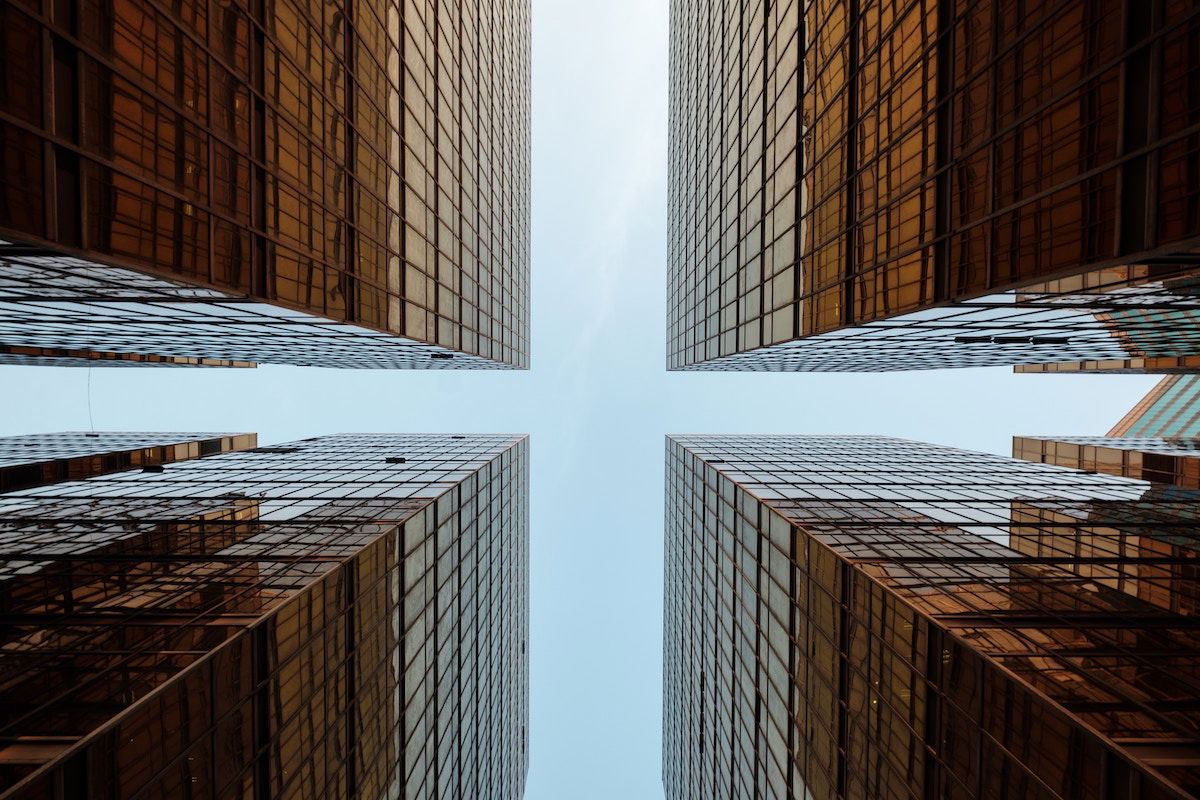
4. Complement Your Colors
Color theory gives you an excellent base of knowledge when you’re working in a creative industry. And putting this knowledge is a fantastic way to create aesthetic photos.
The color wheel is the place to start with color theory. It helps you understand and visualize how different colors relate.
It’s best to look for complementary colors to create beautiful, aesthetically pleasing images. They’re colors that go well together, bringing the best out of the other.
Complementary colors are found on opposite sides of the color wheel. So red and green work well together. And blue and yellow look great when paired together.
Using triadic colors is another way to create a colorful photo aesthetic. For this option, you take three colors from the color wheel. The colors must be evenly spaced apart on the wheel to be distinct. The combination of red, blue, and yellow is a good example.
Analogous color is another scheme you can bring into your photographic style. This color technique uses colors that are side by side. They blend well, helping you create images with a sense of harmony and belonging. This works well with natural tones.

5. Use a Prominent Subject
Having a prominent subject relates to Gestalt theory. Despite being a psychology theory, we can use some Gestalt principles in photography to create aesthetically pleasing images.
This aesthetics tip focuses on the “figure to ground” principle. It’s concerned with the visual relationship between the subject and the background. It tells us we need a subject that stands proud in its surroundings. This makes it easier for us to identify the subject in the image.
If we have an insignificant subject with a busy background, identifying the subject will take some work. A photo with a clear subject free of distractions makes our life easier. And this makes the picture more pleasing to look at.
There are different ways a subject can be seen as prominent. You can have a white background, so the figure has nothing to complete with. Or subjects can be a color that stands out from the background. Isolating shapes is another way to create a dominant subject.

6. Use a Shallow Depth of Field
This photography technique is perfect for highlighting your subject. It brings focus where you want, leaving everything else blurry and soft.
Depth of field refers to how much of your shot is in focus. If you have a large depth of field, you’ll have a greater distance in focus. A shallow depth of field only focuses on a small area.
It’s commonly used in portrait photography as the photographer can centralize the focus on the subject. The background becomes blurred, giving the image a lovely bokeh effect.
Harnessing this bokeh effect gives you more power to make aesthetic pictures. The soft shapes and tones created by the lack of focus give portraits a dream-like quality. It makes them easy to look at and aesthetically pleasing.
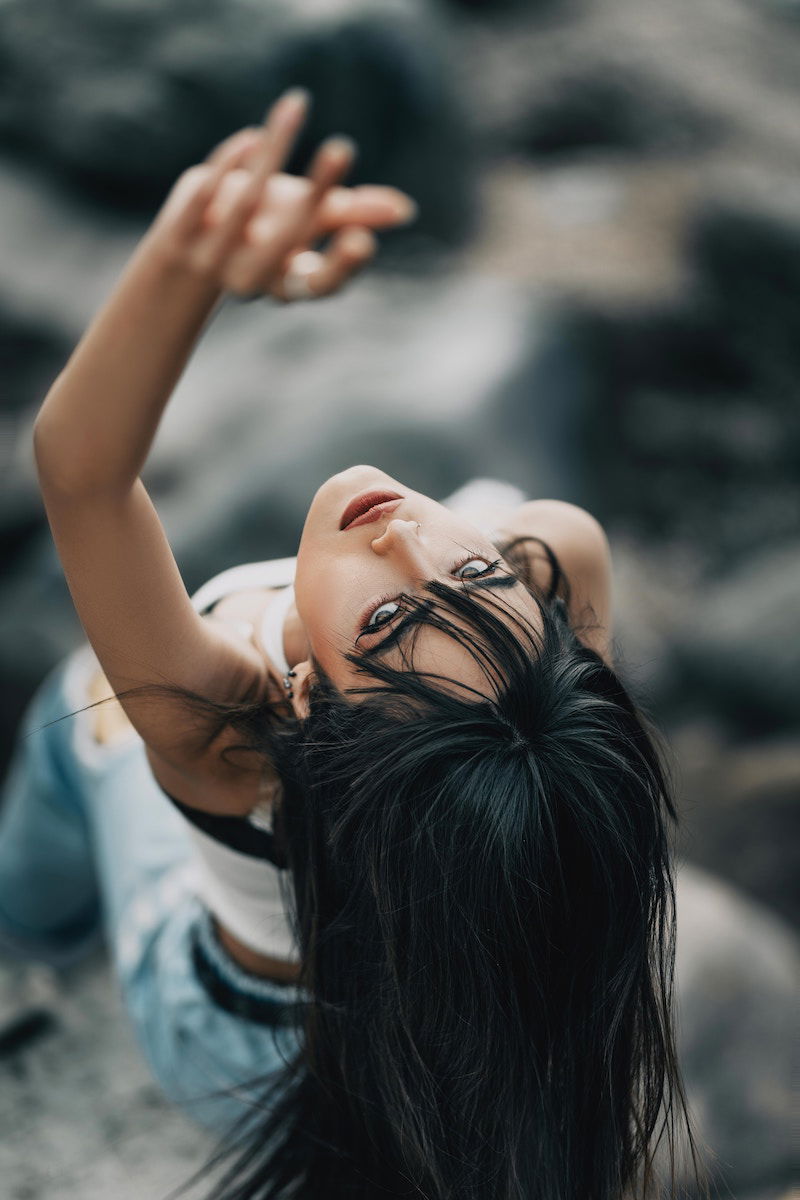
7. Look For Rhythm and Repetition
You might not associate rhythm with photography. But when objects and shapes repeat, certain photos develop a rhythm. The forms don’t need to be identical. They can be similar or even reminiscent of each other.
The beats of the rhythm can be trees along a path or hot air balloons in the sky. But there has to be consistency in their positioning. Repeated shapes do make aesthetic photos. But rhythm needs a beat. And the beat comes from steady repetition.
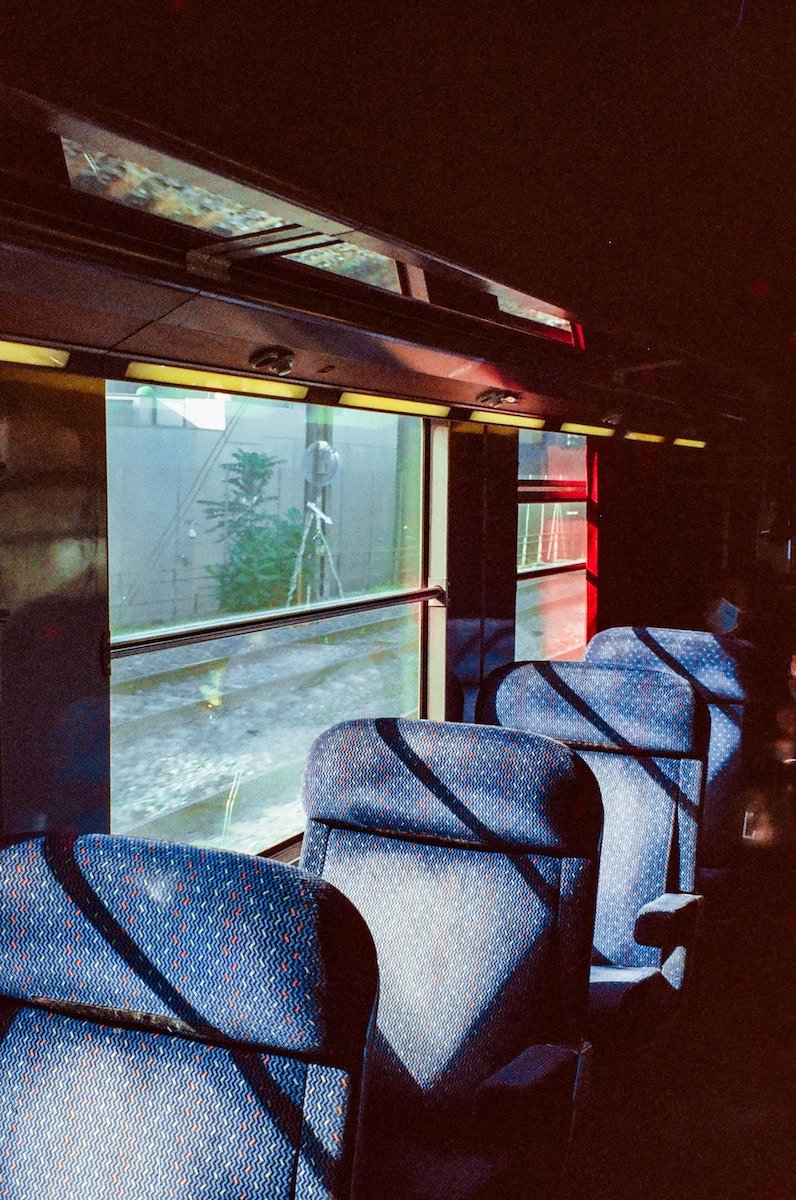
Tips for Creating a Personal Aesthetic
Now we show you how to create a personal aesthetic in photography. It’s about developing a style in your work so your photography has an aesthetic signature. If you want a distinctive photographic style linked to your name, we’ll help you achieve that goal.
8. Develop Your Technique
It’s perfectly natural to experiment with techniques and styles in the early days of your photography development. But as you progress, you need to refine your processes. You want to decide what kind of photos you want to take.
The camera is the place to start. It doesn’t matter which type of camera you use. It can be a DSLR or mirrorless. Or you could keep the art of film photography alive with a 35mm. The important thing for your photo aesthetic is that you master camera settings.
You need to find the settings that give you the aesthetic you want. Once you’ve nailed them, you’ll be able to achieve similar results every shoot. You can make tweaks and adjustments. But once you’re on the right track, keep following it.
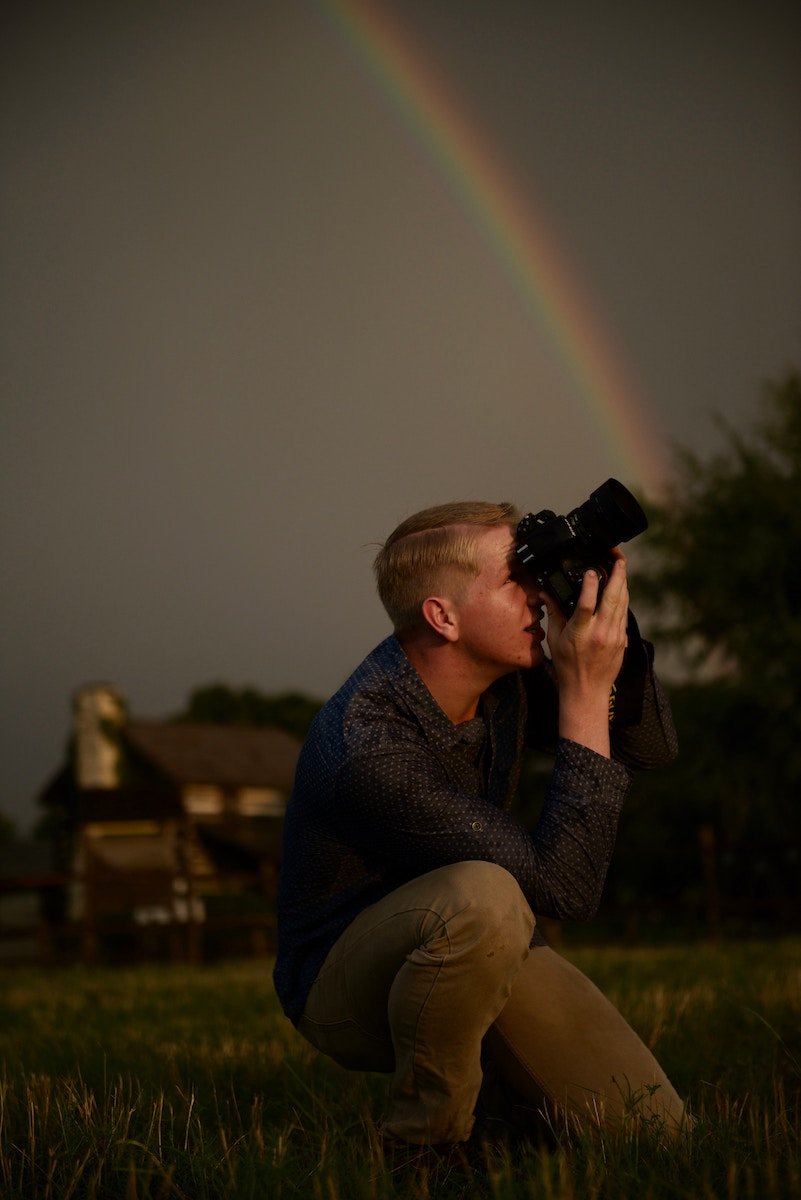
9. Be Consistent in Your Editing Process
The amount of photo editing you do is entirely up to you. But your editing must be consistent to create a unique style and aesthetic. It’s best to avoid big variations in post-processing techniques.
You can take a minimalist approach with little to no editing. Or perhaps you’d rather go down a production-heavy route. Both options are perfectly acceptable as long as you stick with one.
You also have freedom of choice regarding the software you use. Photoshop and Luminar Neo are both excellent post-production tools with fantastic editing options. And there’s Adobe Lightroom for minor touch-ups and adjustments.
No matter which software you use, stay true to your chosen process. Be consistent with your Lightroom presets. And save shortcuts and formulas on Photoshop. This speeds up the process and gives your work a consistent aesthetic.

10. Choose One Style of Lighting
Lighting is one of the key elements in photography. And it plays a significant role in building a recognizable aesthetic. You should find a lighting style that works for you and gives you the desired effect.
Golden hour is perfect for creating aesthetically pleasing photos. But if you want to create a personal aesthetic, you’ll need more than that.
You can use natural light. Harnessing the soft tones of daylight can become part of your aesthetic style. Rosie Matheson is the perfect example, as natural light plays a big part in the finish of her portraits.
Shooting with artificial light can produce photos with a cinematic aesthetic. Shooting at night with neon signs gives you a retro noir effect, especially with the grain effect of a high ISO. Check out Louis Dazy for inspiration.
A hard flash became a popular feature of fashion photography in the 2010s. And the punchy and garish aesthetic is still popular now. It uses flash photography for a distinct aesthetic. Carianne Older uses this type of photography for a kitsch and over-the-top glamor aesthetic.

11. Look At Your Work As A Whole
It’s easy to get distracted by small details in individual photos. You can spend hours looking at your images as standalone pieces of work. But to create a personal aesthetic, you must look at your work as a whole.
Step back and observe your work as a collection. Group your photos and look at them all at once. Ask yourself whether they work together as a whole. Do they hold a clear and consistent message?
Standing back will help you stay on track. If you’re drifting off course, you can identify the problem and redirect yourself. Any photos that don’t fit your aesthetic will stick out. You can edit them to fit your aesthetic or cut them out completely.

12. Think About Your Platform
When it comes to a personal aesthetic, you must consider how you’ll display your work. If Instagram is your main platform for sharing your work, make your photos square. This way, they’ll be shown their fullest potential on that platform.
If you have your own website, you have more freedom with dimensions. But it’s best to consider how you’ll display and catalog your work. You can have different galleries for each project. Or you can have everything displayed in one collection.
Prints might be your favored format for displaying your work. You must think about how to prepare and print (or develop) them, whether traditional or modern techniques. You also have to consider the size and space they’ll be displayed.
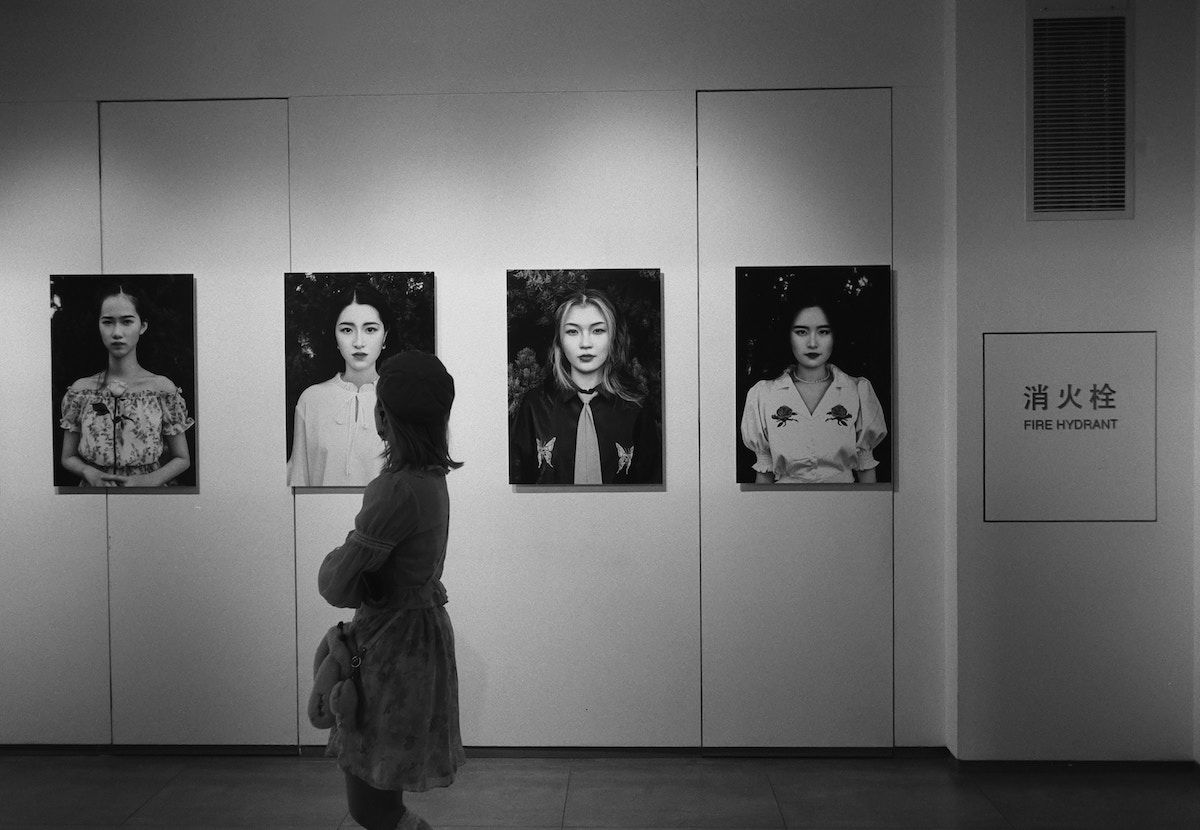
Conclusion: Aesthetic Pictures
There are two areas to think about when it comes to aesthetics in photography. The first is that photography can make aesthetically beautiful images. The second relates to a photographer’s photo aesthetic.
To create aesthetic pictures, you need to focus on a simple composition. Look for prominent subjects and rhythms in your environment. You can use colors to enhance the aesthetic qualities of your photos. And you can also create a photo aesthetic that’s a signature of your work.
You need to hone your craft and be consistent in your practices. And as your photography style develops, so will your photography aesthetic. If you’re starting your journey with aesthetic photography, try out our Effortless Editing course. It will help you master all the secrets of professional editing in Lightroom.
